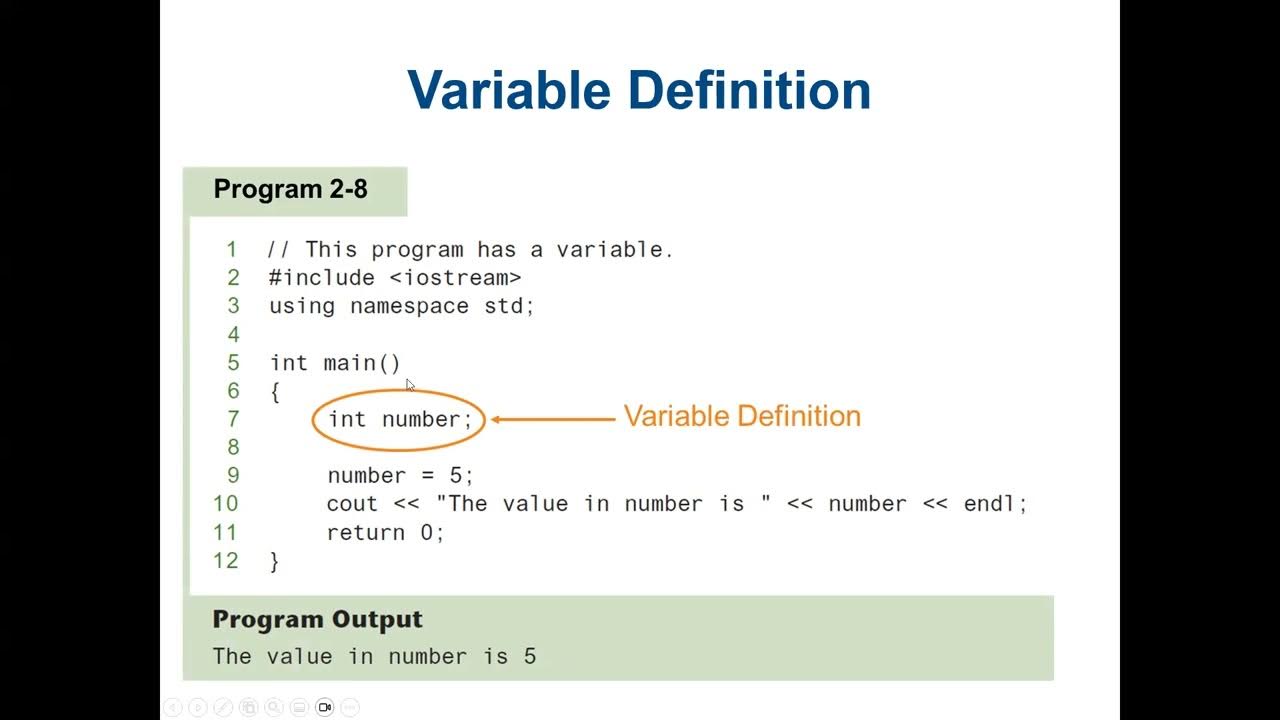Basic Syntax Of A C Program: C Tutorial In Hindi #5
Summary
TLDRThis video offers an in-depth introduction to C programming, focusing on the fundamental building blocks like tokens, keywords, identifiers, constants, string literals, and symbols. It covers essential concepts such as program structure, syntax, and how to compile and execute code using Visual Studio Code. The presenter explains the importance of semicolons in statement termination and provides tips for writing clean, readable code. The video also highlights the difference between variables and constants, while demonstrating the compilation and execution process in a step-by-step manner for beginners.
Takeaways
- 💻 The video focuses on explaining basic concepts of C programming language, such as tokens, constants, keywords, and symbols.
- 📖 C programming involves tokens like keywords, identifiers, constants, string literals, and symbols, which are the basic building blocks.
- 🔑 Keywords in C programming are reserved words and cannot be used as identifiers like variable names.
- 📝 The semicolon (`;`) is crucial in C programming, as it is used to terminate statements.
- ⚙️ The video explains how to write a simple 'Hello World' program in C and break down its components, such as 'printf' and its use of tokens.
- 🚀 C programs need to be compiled and executed, with tools like Visual Studio Code mentioned for writing and running code.
- 🧩 Case sensitivity is important in C programming, as variable names are case-sensitive.
- 🛠 The video discusses using whitespace characters and their importance in formatting and readability, but not in the execution of a C program.
- 🎯 An introduction to constants and variables in C programming is provided, explaining their usage and differences.
- 📄 The video offers the option to download notes and a one-pager PDF summarizing the concepts for further study.
Q & A
What is the purpose of semicolons in C programming?
-Semicolons are used to terminate statements in C programming. Each statement must end with a semicolon to indicate the end of the instruction.
What are the key components of a C program?
-The key components of a C program include tokens such as keywords, identifiers, constants, string literals, and symbols. These are the basic building blocks of a C program.
What is a 'token' in C programming?
-A token in C programming is the smallest element of a program that the compiler recognizes. It can be a keyword, identifier, constant, string literal, or symbol.
What is the importance of 'printf' in a C program?
-The 'printf' function is used in C to print output to the screen. It is commonly used to display messages and variables in a program.
How is a C program compiled and executed in Visual Studio Code?
-To compile and execute a C program in Visual Studio Code, the program is written, saved, and then compiled using the appropriate compiler. After successful compilation, the program is executed, and its output is displayed on the screen.
What are reserved keywords in C programming?
-Reserved keywords in C programming are words that have special meanings and cannot be used for any other purpose, such as defining variables. Examples include 'int', 'return', and 'if'.
What is an identifier in C programming?
-An identifier is a name used to identify variables, functions, or other entities in a C program. It can consist of letters, digits, and underscores, but it cannot start with a digit.
What is the difference between a variable and a constant in C programming?
-A variable is a data storage location that can change its value during program execution, while a constant is a fixed value that does not change once it is defined.
Why is C considered a case-sensitive programming language?
-C is case-sensitive, meaning that it distinguishes between uppercase and lowercase letters. For example, 'Variable' and 'variable' would be considered different identifiers.
What is the role of white spaces in C programming?
-White spaces, such as spaces, tabs, and newlines, are used to separate tokens in C programming. They help make the code more readable but are otherwise ignored by the compiler.
Outlines

This section is available to paid users only. Please upgrade to access this part.
Upgrade NowMindmap

This section is available to paid users only. Please upgrade to access this part.
Upgrade NowKeywords

This section is available to paid users only. Please upgrade to access this part.
Upgrade NowHighlights

This section is available to paid users only. Please upgrade to access this part.
Upgrade NowTranscripts

This section is available to paid users only. Please upgrade to access this part.
Upgrade NowBrowse More Related Video

Introduction to C++, The Parts of a C++ Program, Identifier Naming Rules, output statements

C_08 Characters | Identifiers & Keywords in C Language | C Programming Tutorials

TEKNIK KOMPILASI - Analisa (Leksikal, Sintaks dan Semantik) - Part 1

Python Syntax - Everything you need to know!

Input and Output in C++

24: String and &str in Rust
5.0 / 5 (0 votes)